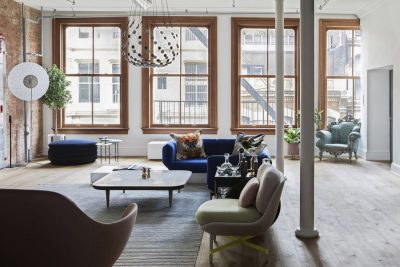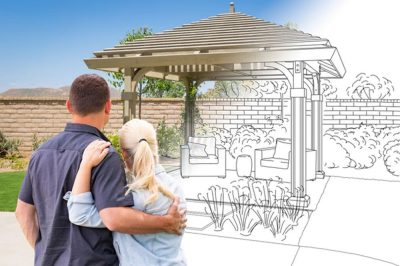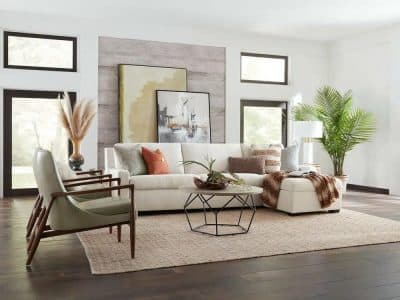
Looking for a custom closet that combines beauty with practical functionality?
A closet that looks stunning yet fails to meet your everyday requirements is the worst situation possible. You can achieve both stunning aesthetics and practical functionality in your closet through thoughtful planning and design.
Recent statistics show that homeowners who purchase well-designed custom closets benefit from better organization and potentially double their investment during home sales.
This article provides essential tips and strategies that will help you design a custom closet to maximize storage space and improve organization while creating a practical and luxurious solution for your home.
What you’ll discover:
- Space Planning and Assessment
- Optimizing Storage Solutions
- Lighting Considerations
- Smart Technology Integration
- Sustainable Material Options
- Customization and Personalization
- Maintenance and Flexibility
Space Planning and Assessment
Creating a functional custom closet starts with correct space planning. You need to evaluate your specific requirements and measure your available space prior to picking designs and materials.
Here’s what you need to consider:
– Inventory your clothing and accessories
– Measure your available space accurately
– Analyze your daily routines and habits
– Identify your storage priorities
The latest trend in closet planning involves transforming wasted corner spaces into specialized storage compartments to boost closet functionality and efficiency.
Working with ClosetNow custom closets in NYC streamlines closet design because their consultants will assess your space against your needs to develop the best storage solution that utilizes every square inch.
Custom closets that excel take into account present storage needs while allowing room for future adaptability. Consider future changes to your storage needs which might include expanding your shoe collection or rotating seasonal items throughout the year.
Optimizing Storage Solutions
Custom closets aim to achieve peak storage efficiency. A well-designed mix of hanging space alongside shelving, drawers and specialized storage solutions will convert a chaotic closet into an orderly space.
Apply these storage optimization techniques when you plan out your custom closet design.
– Use double-hanging sections in closets to store shirts, blouses and other shorter garments.
– Designate extended hanging spaces for dresses and formal attire along with coats.
– Adjustable shelving for folded clothes and accessories
– Use deep drawers to store bulky items along with intimate apparel.
– Custom storage solutions exist to help keep shoes, ties, belts and jewelry neatly arranged.
Design experts recommend modular closet systems because their adjustable shelving and interchangeable parts enable adaptation to evolving storage needs which makes them perfect solutions for families and renters.
A prevalent error involves neglecting the storage capabilities of vertical space. The space above eye level in closets represents a largely unused storage opportunity. You can significantly increase your storage space by installing high shelving for infrequently used and seasonal items without needing to enlarge your closet’s physical size.
Lighting Considerations
Even the best-designed closet will fail to function properly if lighting conditions are poor. Your ability to find your clothing and accessories depends on clear visibility within your closet space.
These lighting methods will enhance your custom closet space:
– Ambient lighting for overall illumination
– Task lighting for specific areas
– Use accent lighting to draw attention to your closet’s special features or collections.
– Motion-activated lights for convenience
Soft and warm backlit lighting systems are now being used to replace harsh overhead illumination because they create a peaceful atmosphere which simultaneously improves clothing visibility and closet functionality.
The right lighting setup brings both functional benefits and aesthetic improvements to your closet space. LED strip lights on shelves or within drawers create a luxurious ambiance while helping you find items faster.
Smart Technology and Materials
Custom closet design is being transformed by smart technology in 2025. Modern closet design now includes smart mirrors with display features and automated lighting systems and AV integration to improve user convenience.
The implementation of smart closet technology streamlines morning routines while eliminating stress. You could easily find your lost sock through an inventory tracking system or enjoy your closet lighting up as you enter.
Sustainable materials continue to rise in popularity for closet design applications. Homeowners who prioritize green design principles find reclaimed wood and bamboo to be stylish options that align with their environmental commitments.
These materials enhance your closet with distinctive style unmatched by common mass-produced goods and they improve indoor air quality with fewer harmful emissions.
Customization and Personalization
Here’s the thing about custom closets…
The closet solution that succeeds for another person might fail to meet your requirements. Personalization according to your individual requirements and lifestyle choices leads to true closet functionality.
Consider these customization options for your closet:
– Adjustable components which allow users to modify the setup whenever their requirements shift
– Personalized inserts for specific collections or accessories
– Custom hardware that complements your home’s aesthetic
– Coordinate closet colors with your existing wardrobe and room decor.
– Specialty storage for unique items or hobbies
Consumers now prefer custom craftsmanship and personalized design choices like designer hardware and edge profiles over prefab kits because they want durable closet solutions that work with their master bedroom décor.
Small personalization touches have tremendous power to transform your closet into a space that reflects your personal style and preferences. By incorporating a small seating area or a dedicated space for outfit planning and accessory display you can convert a basic storage space into a personal retreat.
Maintenance and Flexibility
Here’s something that many homeowners overlook…
The functionality of a beautifully designed custom closet diminishes if proper maintenance is not performed. Your storage requirements will evolve as time passes.
Consider these maintenance and flexibility strategies:
– Systematic decluttering activities maintain functional efficiency within the storage system.
– Seasonal adjustments to your closet system enable it to meet your evolving wardrobe demands.
– Quality hardware that can withstand daily use
– Components that can be rearranged whenever necessary
– Professional adjustments when major life changes occur
Minimalist and clutter-free closet designs with concealed storage help keep spaces organized and maximize functionality while creating a peaceful storage environment.
Your custom closet should function as a dynamic space that develops alongside your lifestyle rather than remaining a fixed structure. Optimal closet designs predict future adjustments and enable easy modifications without full reconstruction.
Luxury Features and Common Mistakes
Do you want to transform your closet into a remarkable experience?
More homeowners are choosing to install luxury elements like natural stone shelving and custom cabinets which turn closets into luxurious yet functional spaces that add to property resale value.
A high-end closet should offer features that improve daily convenience rather than focusing exclusively on aesthetic appeal. Quality upgrades should combine beauty and practicality.
Stay alert to frequent design errors that can destroy your closet project. Pay attention to insufficient lighting conditions and inadequate ventilation while also avoiding inflexible systems and measurement errors.
People commonly overlook how vital reflective surfaces are in closet design. Mirrored doors and cabinet faces are gaining popularity because they provide a luxurious atmosphere and spaciousness which improves both closet functionality and aesthetics.
The Closet Game Plan
Developing an effective custom closet requires practical design choices rather than keeping up with trends or spending on premium systems. Your custom closet should be created through deliberate space design to meet your daily requirements along with your habits and lifestyle needs.
Creating a custom closet that enhances your daily routine requires proper space planning along with optimized storage, quality lighting, smart technology, sustainable materials, personalized design elements, and regular maintenance.
Remember these key takeaways:
– Make function your top priority while keeping visual appeal in mind
– Allocate funds for high-quality lighting solutions as well as durable hardware and flexible components.
– Design your storage space with future flexibility in mind as your requirements develop.
– Consider sustainable and personalized options
– Maintain your closet system regularly
Your custom closet functions as a daily sanctuary which reduces stress and saves time while adding luxury to daily life beyond just storage capabilities. Implementing these tips will help you build the functional custom closet you’ve always wanted.








